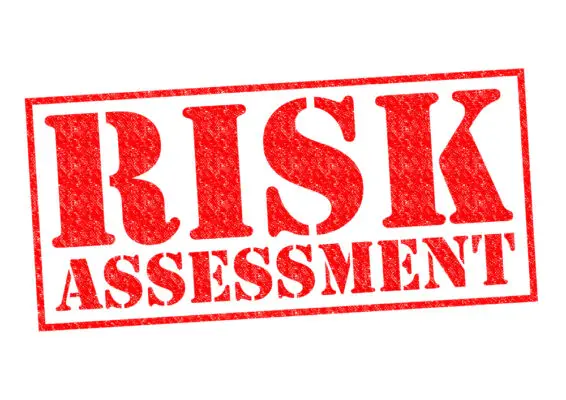The 62443 risk assessment, based on the ISA/IEC 62443-3-2 standard, is a crucial component of cybersecurity in control systems. This detailed risk assessment process aims to identify and evaluate potential cyber threats to ensure the security and resilience of critical infrastructures. By adhering to this internationally recognized framework, organizations can effectively assess their cybersecurity risks across various roles.
The objective of the IEC 62443-3-2 standard is to provide a systematic approach to identifying vulnerabilities, assessing risks, and implementing appropriate countermeasures. This risk assessment process involves analyzing threats and vulnerabilities specific to control systems, evaluating their potential impact, and determining the likelihood of occurrence.
Implementing the ISA/IEC 62443-3-2 standard offers several benefits. It enables organizations to prioritize cybersecurity efforts by focusing on high-risk areas while allocating resources efficiently. Additionally, it helps stakeholders comprehensively understand potential risks associated with control systems and make informed decisions regarding risk mitigation strategies.
The 62443 risk assessment is vital in safeguarding critical infrastructures from cyber threats by objectively evaluating cybersecurity risks within control systems.

Cybersecurity Risk Assessment According to ISA/IEC 62443-3-2
This focuses on Cybersecurity Risk Assessment according to ISA/IEC 62443-3-2.
The initial risk assessment is the first step in this process, which involves identifying and evaluating potential risks to a control system’s cybersecurity.
From a cybersecurity perspective, safeguarding the OT environment is of paramount importance. With the digital world becoming increasingly interconnected, the need for robust security measures has never been more critical. The high-level risk assessment, a pivotal component of any cybersecurity plan, identifies and analyzes potential threats to the OT environment.
The Risk Assessment Tool is an integral resource in this context. It helps businesses and organizations categorize and manage potential threats in their OT environment. This tool provides a comprehensive overview of the cybersecurity landscape, aiding in detecting and managing vulnerabilities. It’s particularly useful in assessing the impact of any potential breach and planning mitigations.
Following this, a Detailed Risk Assessment is conducted, which involves a more in-depth analysis of specific vulnerabilities and threats.
Finally, the ISA/IEC-62443/ISA-99 Based Control System Cybersecurity Detailed Risk Assessment provides guidelines for conducting comprehensive assessments to ensure the security and integrity of control systems.
Initial Risk Assessment
A visual representation of the initial risk assessment can be observed through a comprehensive analysis of potential hazards and their corresponding likelihoods and impacts. This step is crucial in identifying and evaluating cyber incidents that may threaten industrial control systems.
Various factors are considered during this process, such as corporate risk criteria and potential threat vectors. The assessment also considers the risks associated with cybersecurity vulnerabilities within an organization’s cyber assets.
By conducting an initial risk assessment, organizations can gain valuable insights into the potential impact of a cyber attack on their operations. This information serves as a foundation for the subsequent steps in the risk management process, enabling organizations to prioritize mitigation efforts based on identified risks.
Detailed Risk Assessment
When conducting a detailed risk assessment, organizations delve deeper into the potential threats and vulnerabilities identified in the initial assessment, analyzing them with precision to determine their specific likelihoods and impacts on industrial control systems.
This step is crucial in the cybersecurity risk assessment as it helps organizations identify and prioritize the most critical cyber risks they face. The detailed risk assessment method involves using a risk assessment methodology that includes evaluating the severity of each threat, determining its likelihood of occurrence, and calculating a risk score based on these factors.
This information can create a risk assessment matrix that categorizes risks based on their impact and likelihood. By conducting a detailed risk assessment, organizations can identify residual risks – those that remain even after implementing existing controls – and develop appropriate risk mitigation alternatives to reduce these risks to an acceptable level.
ISA/IEC-62443/ISA-99 Based Control System Cybersecurity Detailed Risk Assessment
The ISA/IEC-62443/ISA-99 based control system cybersecurity detailed risk assessment method provides organizations with a systematic approach to analyze potential threats and vulnerabilities, enabling them to prioritize critical cyber risks.
This method allows organisations to identify security vulnerabilities in their OT (operational technology) environment and assess the potential consequences of a successful attack.
This detailed risk assessment considers various cybersecurity issues specific to control systems, such as the loss of production or disruption of critical processes.
It is a valuable tool for organizations to evaluate their cybersecurity posture and make informed decisions regarding risk mitigation strategies.
The comprehensive nature of this risk assessment ensures that all aspects of control system cybersecurity are considered from a high-level perspective, resulting in a more robust and effective cybersecurity risk assessment.
Cybersecurity Risk Assessment
In the realm of cybersecurity, the control engineer plays a pivotal role. Central to Control Engineering, this profession ensures the safety and functionality of a company’s critical and corporate assets.
From the calibration devices to boundary devices, each connected device in the organization must be thoroughly assessed and protected. Cybersecurity risk assessment activities, therefore, become essential components in maintaining the integrity of these assets.
One effective method for cybersecurity risk management is the Business Process-based Risk Calculation iRISK. It takes a thorough approach to cybersecurity risk assessment, looking at everything from low-level risk assessments to more comprehensive industrial cybersecurity risk assessments. Its cool control feature allows it to analyze potential threats and predict their likely impacts.
Considerable attention is given to attack pads and categories of attacks in a cybersecurity risk assessment. An attack tree tool, for instance, allows cybersecurity experts to map out concrete threat scenarios and identify potential weaknesses in their systems.
These tools help organizations prevent critical consequences, reducing production downtime and safeguarding against actual and potential consequences.
Communication between devices, particularly in aspects of automation, represents a particular area of focus for cybersecurity risk assessment. Maintaining secure and efficient communication pathways is crucial, Whether in a building automation context or an automation contractor vendor situation.
Automation cybersecurity leaders must adhere to strict cybersecurity standards to ensure safety. They must consider the environmental consequences of security breaches and the direct impact on the company’s operations.
This process involves assessing the likelihood of potential threats from a likelihood perspective. Categories for likelihood, the combination of likelihood, and differences between likelihood, all form part of the comprehensive cyber security risk assessment process.
Cybersecurity risk management is a multi-faceted discipline that requires meticulous planning, regular assessments, and stringent standards. Whether managing corporate assets or ensuring the security of connected devices, all activities contribute to a secure and robust cybersecurity environment.

A Control System Cybersecurity Detailed Risk Assessment (CDRA)
Conducting a Control System Cybersecurity Detailed Risk Assessment (CDRA) is essential in ensuring the security of control systems. This assessment helps identify and evaluate cybersecurity risks, allowing organizations to implement effective risk management strategies.
Analyzing cyber threats, asset vulnerabilities, and the consequences of cybersecurity threats, critical assets can be protected against potential attacks. The CDRA involves examining detailed threat vectors and assessing device security level targets to determine the level of protection required for critical devices.
To engage the audience and maintain their interest, a 2-column table is included below, showcasing a CDRA’s importance in managing cybersecurity risks.
| Importance of CDRA | Benefits |
|---|---|
| Identifies potential cyber threats | Enhances control system security |
| Evaluates asset vulnerabilities | Provides insights for risk mitigation |
| Assesses consequences of cybersecurity threats | Ensures protection of critical assets |
| Examines detailed threat vectors | Guides implementation of appropriate security measures |
| Determines device security level targets for critical devices | Safeguards control systems against potential cyberattacks |
Conducting a CDRA, organizations can proactively address cybersecurity risks and safeguard their control systems from malicious activities.
The Process
To effectively manage cybersecurity risks and ensure the protection of critical assets, organizations must engage in a comprehensive process that systematically evaluates the security measures implemented within control systems. This process is known as Control System Cybersecurity Detailed Risk Assessment (CDRA).
The CDRA involves several activities to identify and assess cyber risks, such as conducting vulnerability assessments, reviewing system configurations, and analyzing threats. A key component of the CDRA is using a risk matrix, which helps categorize and prioritize risks based on their severity and likelihood.
The assessment also includes a description of risks identified during the evaluation process. Based on these findings, organizations can implement appropriate cybersecurity controls to mitigate the identified risks.
Additionally, additional controls can be recommended if necessary to enhance the security posture of control systems further.
Benefits
One significant advantage of the Control System Cybersecurity Detailed Risk Assessment (CDRA) process is its ability to comprehensively understand the security measures implemented within control systems, facilitating informed decision-making for organizations.
This involves a business process-based risk calculation considering current risk reductions, control networks, control system design, critical control systems, and cybersecurity controls. Analyzing different attack and threat scenarios, the CDRA helps identify potential vulnerabilities in control systems and assesses their impact on the organization’s overall security posture.
Additionally, asset groupings are used to categorize and prioritize assets based on their criticality and value to the organization. The CDRA also considers the attack surface of control systems, allowing organizations to focus their resources on areas that are most susceptible to cyber threats.
| Keyword | Explanation |
|---|---|
| Business process-based risk calculation | A method of assessing risks by considering how they could impact an organization’s business processes. |
| Current risk reductions | The extent to which existing security measures mitigate or reduce identified risks. |
| Control network | Hypothetical situations are when an attacker exploits a control system’s vulnerabilities to compromise security or disrupt operations. |
| Control system design | Security measures are implemented within a control system to protect against cyber threats. |
| Critical control systems | Systems that are essential for the safe operation of industrial processes or infrastructure. |
| Cybersecurity controls | The configuration and architecture of a control system determine its functionality and security capabilities. |
| Attack scenarios | Hypothetical situations in which an attacker exploits vulnerabilities in a control system to compromise its security or disrupt operations. |
| Threat scenarios | Potential sources or actors who pose a threat to the security of a control system. |
| Asset groupings | Categorization of assets based on their criticality and value to prioritize resource allocation for protection efforts. |
IEC 62443-3-2 assesses the cybersecurity risks for various roles:
IEC 62443-3-2 is an essential framework that evaluates cybersecurity risks associated with different roles. It provides a comprehensive approach to risk assessment by considering various factors and vulnerabilities.
This standard recognizes the significance of social engineering, which involves manipulating individuals to gain unauthorized access or divulge sensitive information. Additionally, it emphasizes the importance of assessing the level of risk posed by cyber-related attacks, such as authentication attacks and deliberate attacks on devices connected within a network.
IEC 62443-3-2 utilizes business process-based risk calculation methods and attack trees to evaluate the threat environment. By employing these techniques, asset owners can effectively identify potential vulnerabilities and develop appropriate security measures to mitigate low-level risks before they escalate into significant breaches.
IEC 62443-3-2 plays a crucial role in ensuring the resilience and protection of critical infrastructures against cyber threats.
Frequently Asked Questions
What are the key components of a cybersecurity risk assessment according to ISA/IEC 62443-3-2?
The key components of a cybersecurity risk assessment, as per ISA/IEC 62443-3-2, include identifying assets and vulnerabilities, analysing threats, determining potential consequences, evaluating existing controls, and developing risk mitigation strategies.
How does a Control System Cybersecurity Detailed Risk Assessment (CDRA) differ from a general cybersecurity risk assessment?
A control system cybersecurity detailed risk assessment (CDRA) focuses on the risks associated with control systems, such as industrial processes or critical infrastructure. It differs from a general cybersecurity risk assessment by considering unique vulnerabilities and threats in these specific systems.
What are the steps involved in the process of conducting a cybersecurity risk assessment?
The process of conducting a cybersecurity risk assessment involves several steps. These include identifying assets, threats, and vulnerabilities, assessing the likelihood and impact of risks, implementing controls to mitigate risks, and regularly reviewing and updating the assessment.
What are the benefits of implementing an IEC 62443-3-2 cybersecurity risk assessment framework?
Implementing the IEC 62443-3-2 cybersecurity risk assessment framework offers several benefits. It provides a structured approach to identify and mitigate security risks, enhances the overall security posture of an organization, and enables compliance with industry standards and regulations.
How does IEC 62443-3-2 assess cybersecurity risks for different roles within an organization?
IEC 62443-3-2 assesses cybersecurity risks for different organisational roles by defining specific security objectives and requirements for each role. It provides guidelines for identifying, evaluating, and mitigating risks to ensure a comprehensive approach to cybersecurity across the organization.

Conclusion
The ISA/IEC 62443-3-2 provides a comprehensive framework for cybersecurity risk assessments in control systems.
This process involves evaluating potential risks and vulnerabilities, identifying security controls, and assessing the impact of potential incidents.
The benefits of this approach include improved resilience against cyber threats, enhanced protection of critical infrastructure, and increased confidence in system security.
Following the guidelines set forth by IEC 62443-3-2, organizations can better understand their cybersecurity risks and implement effective measures to mitigate them.

Chris Ekai is a Risk Management expert with over 10 years of experience in the field. He has a Master’s(MSc) degree in Risk Management from University of Portsmouth and is a CPA and Finance professional. He currently works as a Content Manager at Risk Publishing, writing about Enterprise Risk Management, Business Continuity Management and Project Management.

